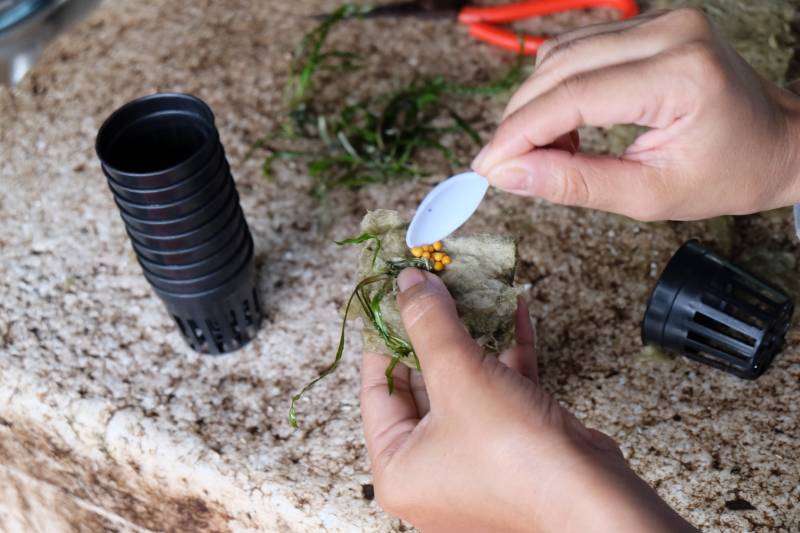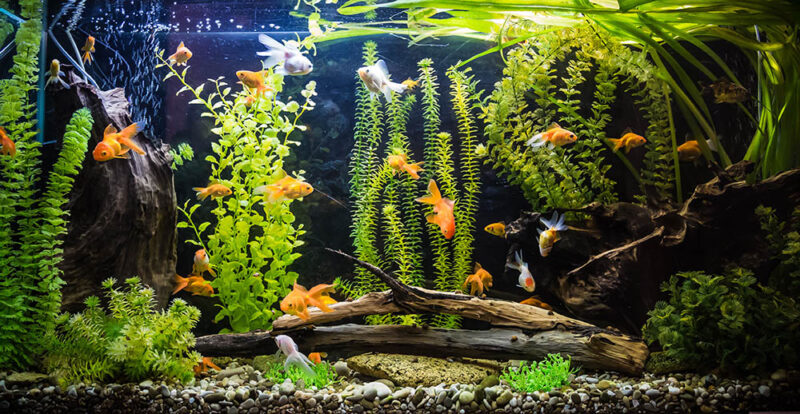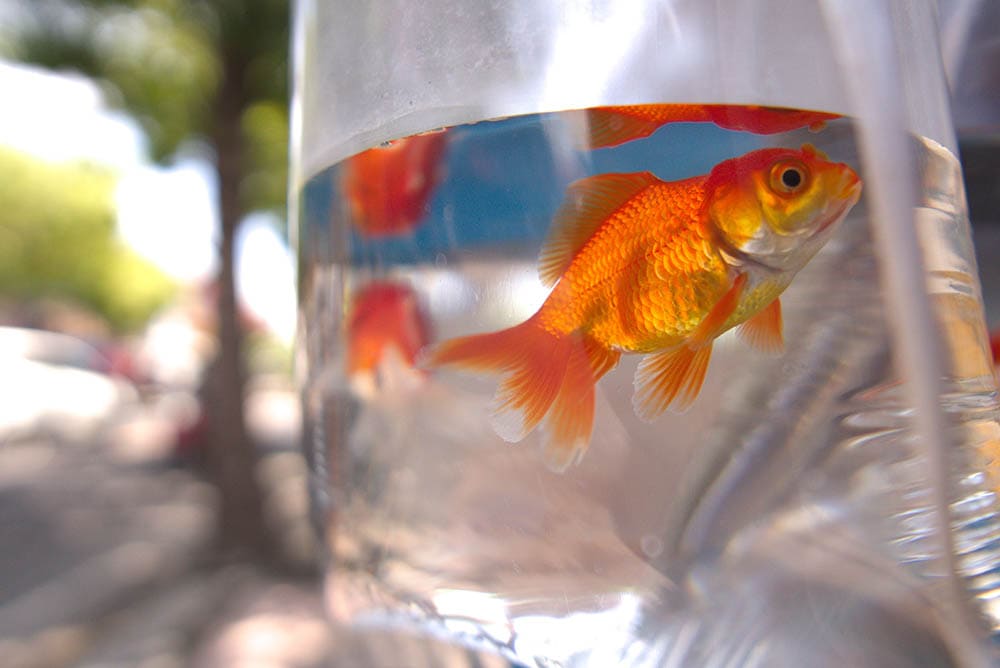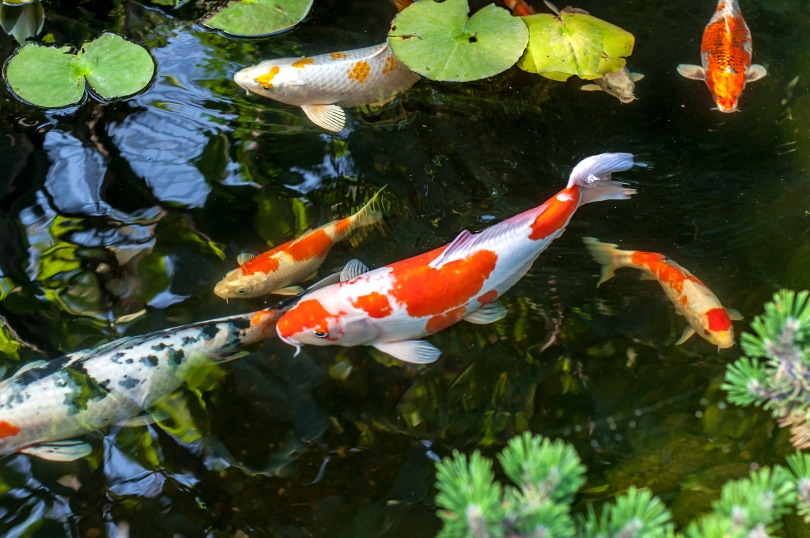When you start putting together the needed materials for an aquarium, it can seem like you need to be a chemist to get everything to work together the right way. Adding live plants into the mix may seem like a step only meant for professionals or advanced hobbyists.
This doesn’t have to be true, though. Research can help you figure out how to balance out your fish’s environment, even when adding plants in there. Plants need the right amount of lighting, an appropriate substrate, a layer of the right material for them to rest in and grow from, and the right fertilizers.
Even disregarding the other pieces of the aquarium plant puzzle, diving into the world of fertilizers can make you feel like you are in way over your head. That’s why we’ve created this list with reviews of the top seven aquarium plant fertilizers on the market.
A Quick Comparison of Our Favorites in 2024
| Image | Product | Details | ||
|---|---|---|---|---|
| Best Overall |

|
API Leaf Zone |
|
Check Price |
| Best Value |

|
Aqueon |
|
Check Price |
| Premium Choice |

|
NilocG Thrive+ |
|
Check Price |

|
Seachem Flourish |
|
Check Price | |

|
Greenpro Root Tabs |
|
Check Price |
The 7 Best Aquarium Plant Fertilizers
1. API Leaf Zone Freshwater Aquarium Plant Fertilizer — Best Overall
API is a brand that works to promote the best aquarium ecosystems possible. Its line of products accomplishes this well, with almost every product being on the top 10 list in its category.
The API Leaf Zone Fertilizer is no different. It supports lush, green growth and vibrant colors. The nutrients needed by water plants are different than those on land. This fertilizer contains chelated iron to encourage growth and prevent yellowed leaves, as well as potassium to aid photosynthesis. The fertilizer is formulated to allow it to be rapidly absorbed through the leaves.
Five milliliters per 10 gallons of water once a month provides the nutrients needed by the leaves, stems, and roots of the plant. You can use the fertilizer in freshwater aquariums. It is safe for the fish. All in all, we think this is the best overall aquarium plant fertilizer available this year.
2. Aqueon Aquarium Plant Food — Best Value
Aqueon’s bottle of plant food comes in three different sizes. It is chock-full of beneficial macro and micronutrients that plants need to grow healthy for as long as possible at an affordable price.
The bottle contains iron and the potassium needed for sustained, colorful growth, but it also contains kelp extract. The kelp acts as a source of cytokinin. This nutrient helps establish newer additions to the aquarium or young plants. It encourages faster and stronger root development, developing the plant much more rapidly than without it.
3. NilocG Aquatics Thrive+ All in One Liquid Fertilizer — Premium Choice
When you receive this bottle from NilocG, you may be confused because it doesn’t look like a typical aquarium plant fertilizer. This is because NilocG believes in indulging your aquatic plants while making the process clean and simple.
NilocG contains all the essential micro and macronutrients that aquarium plants need. It is a liquid fertilizer for faster absorption and doesn’t make a mess like some dry fertilizers might. A single bottle of this fertilizer is enough to treat 2,500 gallons of water, lasting you a long time. Customers reported on reductions in algal growth caused by other fertilizers, as well as this fertilizer, making their plant growth explode.
This fertilizer is ideal for high-tech aquarium setups with a pH under 7 to absorb properly. The bottle is made with a pump lid, which takes the fuss away from dosing and adding the fertilizer. You can pump it into your tank, and it is good to go. Even though it is more expensive, trying it out is risk-free because the company will give you a full refund if you aren’t 100% satisfied.
4. Seachem Flourish Freshwater Plant Supplement
Seachem’s Plant Supplement works slightly differently compared to other similar products. This is a plant supplement instead of just a plant fertilizer. It still contains the micro and macronutrients needed by freshwater plants but is also full of phytohormones and minerals.
Phytohormones are hormones typically produced inside of a plant and set out to direct specific processes. It controls the speed and production of roots, cell division for the plants to grow, activity of shoot meristems for it to get taller, photosynthetic processes, the death and falling of leaves, seed germination, response to environmental stresses, and much more.
This plant supplement directs the plants to grow a certain way and at a certain speed by using phytohormones. It helps them take up the correct nutrients and disperse them in the best ways for optimal growth. The bottles come in different sizes. 500 milliliters of this product effectively treats 800 liters, or 200 gallons, for anywhere from 4 to 6 months, depending on the number of plants and amount of water you have in your aquariums.
5. Greenpro Root Tabs Fertilizer
This product from Greenpro comes in the form of tablets. The tablets contain sufficient macronutrients, as well as essential trace elements that ensure flourishing plant growth.
One of the big pros of fertilizing with a tablet is that it is slow release, continuously releasing more food for the plants to take up. It keeps anyone from overdosing on specific nutrients and supplies food to the plants for much longer periods. The nutrients that the tablets contain help ensure regular flower formation and blooming, reaching right into the substrate of the plant.
Using it is easy, although perhaps a little wet. The tablet must be pressed into the substrate at the crown of the aquatic plants. One tablet a month is all you need to get the desired results.
6. Glosso Factory All in One Planted Aquarium Fertilizer
Glosso Factory has developed its bottle similar to the design of NilocG. They have included a pump on the bottle to make the usage more straightforward and cleaner for their customers. One significant difference is that the bottle is transparent, letting you see exactly what is going into the aquarium beforehand. Some might find this off-putting because it is a dark green color.
This color or design doesn’t impact the vitality of the fertilizer itself. It is an All-in-One fertilizer, coming in a 16-ounce bottle and is capable of treating up to 4,730 gallons of water.
It gives clear instructions when it is delivered: one pump per 10 gallons of water to feed your plants adequately. The frequency of the dosage depends on the planting. For densely planted, mature tanks, it should be dosed 5 to 7 times a week. For average or newly planted tanks, 3 to 5 times should suffice. For low-tech tanks, dose 2 to 3 times weekly.
The fertilizer contains a balanced formula of all the vital micro and macronutrients to give the plants the meal they needed during the week. The copper content is low on this fertilizer, so it can be used for invertebrates such as shrimp. However, some customers reported deaths in their snail populations.
7. Planted Aquarium Concepts Aquarium Plant Root Fertilizer
Planted Aquarium Concepts have come up with a simple design for their easy-to-use fertilizer. The bags describe exactly how to use them, as well as what they contain.
Each of the bags contains 40 tabs, which look like small brown cubes. They are slow-release fertilizer tablets, meant to be pressed in next to the plants and spaced 3 to 6 inches apart. Once you have planted them, the job does not need to be redone for another 3 months.
The bag should be sealed and stored out of the sun at room temperature to prolong its shelf life. The product entirely excludes copper to keep it safe for freshwater invertebrates.
 Buyer’s Guide – Choosing the Best Aquarium Plant Fertilizers
Buyer’s Guide – Choosing the Best Aquarium Plant Fertilizers
For any plant fertilizers that you settle on, don’t write them off if they don’t work immediately. Check other factors, such as chemical balance in your aquarium, the phosphate levels, and if you have quality lighting.
Looking for a fertilizer that fits your needs leaves the field wide open in regard to the number of products still available. You can work through the considerations below to narrow your options even more.
Nutrients Contained
Plants need certain kinds of nutrients and minerals, as well as a specific amount of them. When you look into any products, check on their ingredients list to see the types and amounts of each nutrient they contain. Make sure that it is enough to satisfy the needs of the plants with the recommended amount of dosing.
A balanced dose of micro and macronutrients is also important. Having too much of one thing or another can cause algal growth in your tank. If you start using a new fertilizer after not having problems with algae before, look at the balance in your tank, and then consider whether a different fertilizer might be a better choice.
Fast or Slow Release
Another consideration is how often you want to have to re-fertilize your tank. Many liquid fertilizers need to be used with great frequency because they are fast-release, which means that they immediately are taken up in a usable form by the plants.
Slow-release is another type of fertilizer. These only need to be put in the tank every 1 to 3 months. They generally come in a cube or gel form and release the necessary nutrients throughout the entire period before they are all used up.
Plant Varieties
Some plant varieties have different needs than others, although most plants have the same basic requirements. Research your plants or those you are interested in planting to find out if they need something specific from their fertilizers.

Fertilizer Form
There are three typical forms of aquarium fertilizers: liquid, root tabs, and pre-packed substrates. Each of these has pros and cons. Much of the decision regarding the form in which you buy your fertilizer comes down to personal preference.
Aquarium Community
If you have anything else living in your aquarium, such as fish or invertebrates, consider their needs. Ensure that the fertilizer you invest in is safe for the animals that make up the aquarium’s community.
For example, too much copper, which is almost any at all, is harmful to freshwater shrimp. It often causes quick death for them. Make sure that the fertilizer you choose doesn’t contain copper if you have shrimp in your tank.
Conclusion
No matter what you decide to use in terms of form and fertilizers, plants will be grateful for anything they can get. Taking a look into your setup can help you figure out what product will work best for you. If you are looking for a product and a company that is tried and true, sticking with API Leaf Zone Freshwater Aquarium Plant Fertilizer reaps almost immediate results. If you want to start fertilizing but don’t have a big budget built up, try the Aqueon Aquarium Plant Food.
Whether it is convenience you are after or creating an underwater jungle, plant fertilizers are a must. Finding one that suits your needs may seem overwhelming, but our product reviews are here to help make your fishy community a little healthier.
Featured Image Credit: Salamatdoh, Shutterstock




















